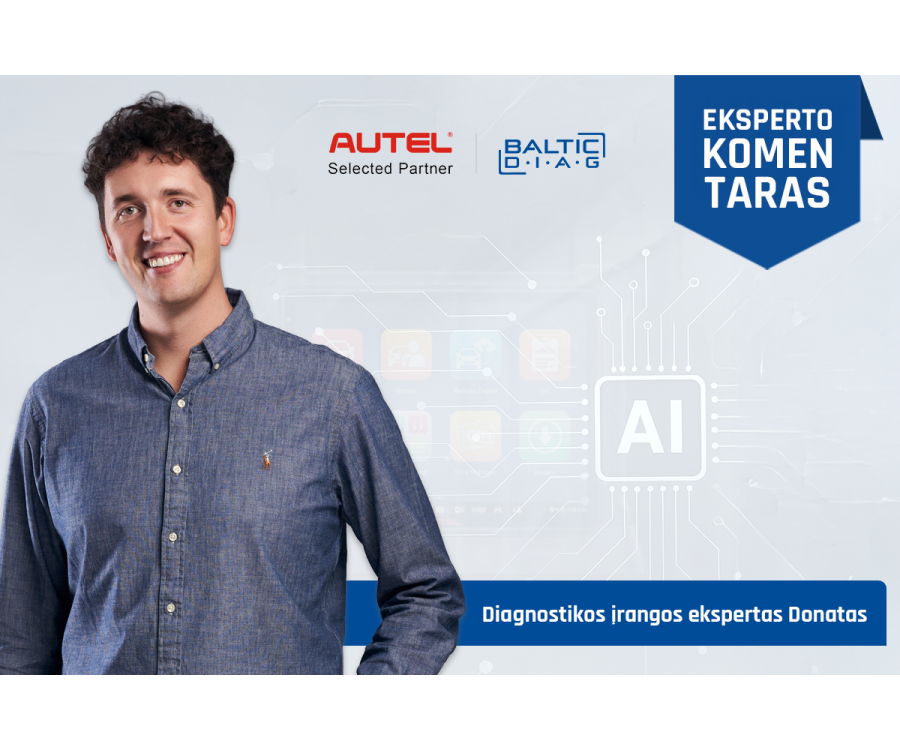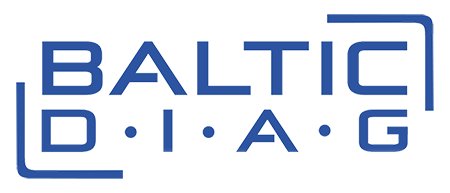Artificial Intelligence in Computerized Vehicle Diagnostics: A Challenge or Truly Functioning Technology?

Author: Donatas Stašaitis, diagnostics equipment expert, UAB Baltic Diagnostic Service
Artificial Intelligence (AI) has reached car service shops. It may not sound as impressive as a "Tesla autopilot", but what is integrated into modern diagnostic equipment today is already changing the daily work rhythm of mechanics. And this is not theory – these are real, functioning solutions.
Diagnostic devices that recognize the problem, suggest a solution, and respond to your voice – this is no longer the future. It’s already in the market. It is important to distinguish where AI is truly functioning in diagnostics and where pre-programmed solutions are simply used.
When does a device become “smart”?
Let’s be honest – we often confuse terms when talking about AI. Diagnostic tools currently do not use deep learning (DL) in the same way as medical devices or language models. They don’t yet learn from your data and don’t generate new decisions.
However, today’s devices do what was impossible a few years ago: they analyze the situation, suggest repair procedures, and provide clear context – not just the fault code, but also related components and likelihoods. And all of this happens in real time, with visualizations, diagrams, and video guides.
Is this AI? Not quite. But it’s very close to what can already be used in a real workshop.
Autel example: how does “intelligent diagnostics” work?
The manufacturer Autel doesn’t experiment. It makes tools for professionals. That’s why their AI-driven diagnostics solutions are not marketing gimmicks, but practical features.
For example, the Autel MaxiSys ULTRA S2 – and soon the MS909 S2 and MS919 S2 – offer an “Intelligent Diagnostic” function. It may sound simple, but it’s a serious system:
- When a fault code is detected, the device automatically selects related information: probable causes, repair steps, known cases, most common fixes.
- For the mechanic, it’s not just a dry OBD-II code. It’s a concrete guide: what to check, where to look, what to connect.
- In some cases, it even shows a video on how to perform the test or repair.
This is not predictive AI, but an intelligent system that reduces errors, saves time, and especially helps younger mechanics who lack years of experience.
Passive AI: helps you think, but doesn’t act for you
1. Intelligent Diagnostic is an advanced diagnostics assistant that provides:
- Fault code explanations
- Possible causes
- Repair recommendations based on a large database
2. Repair Assist acts like a “repair navigator”, offering:
- Troubleshooting trees
- Technical tips
- Sometimes even video instructions
These features use large data volumes and logic to help mechanics make faster decisions.
Active AI: when the tool starts talking to you
Next-gen devices are beginning to speak – literally.
- Voice control – a great feature when your hands are busy but you need to launch a test or switch a menu. You simply say a command – the device obeys.
- Workshop management app – automatically builds service history, and you can dictate notes by voice. Everything is saved in real time – nothing is forgotten.
- Topological CAN tree with suggestions – the system not only shows the full vehicle CAN structure, but also suggests where to start repairs by seeing dependencies between modules.
What we call active AI functionality comes closer to what we imagine as “smart tools.” When you can say “show next step,” and the tool responds – it’s not just convenience, it’s a real boost in efficiency.
The Autel ULTRA S2 has voice-controlled interface. It may sound like a small thing – until you use it. Tool in hand, connected to CAN, test started, but the screen is across the stand. Normally, if you need to run another function, you’d have to put down the tool, take off gloves, walk to the screen. This slows things down.
With the Autel ULTRA S2, it’s much easier – you just say the command and continue working.
Another step – recording service notes by voice. The diagnostic tool automatically builds a report – you just speak your note or reminder. Not only is it more convenient – there are fewer errors and nothing gets missed.
AI in ADAS and wheel alignment too
Diagnostics don’t stop at ECU scanning. If you’ve worked with ADAS, you know how long setup takes. The Autel IA1000 system automatically adjusts targets based on the car model to save time.
Again – voice-controlled calibration process. You don’t need to stand at the screen. Just ask “what’s next” and continue. It’s not luxury – it’s the difference between needing one or two mechanics for the same job.
So what does this change for service shops?
These technologies don’t replace the mechanic – they change how the mechanic works.
These solutions are getting closer to being a personal diagnostics assistant – a device that not only shows data, but helps you make decisions, track progress, and remind you what else to check. They help you:
- make decisions faster
- identify issues more accurately
- rely less on gut feeling and more on data
- avoid returning to the same fault again
- reduce labor needed for each job
And most importantly – the mechanic stays in charge. The device helps. It has no ambition to take over. At least not yet.
We, as a service provider, see that mechanics don’t need another screen – they need a tool that speaks their language. That’s why Autel solutions are valuable right now – they save time and boost efficiency.
When you hear “Artificial Intelligence,” it’s easy to be skeptical. But when it works in your hands, skepticism fades. Because every mechanic ultimately asks one question: does it help me?
If the answer is “yes” – then it works.
And if today AI in car diagnostics is not yet a decision-maker, it’s already a smart assistant doing exactly what you need: not thinking for you – but helping you think more precisely.
This is no longer a promise. It’s help that works today.
Want to see how it works in reality? Get in touch – we’ll answer your questions, demonstrate the features, and help you choose what suits your workshop best.
